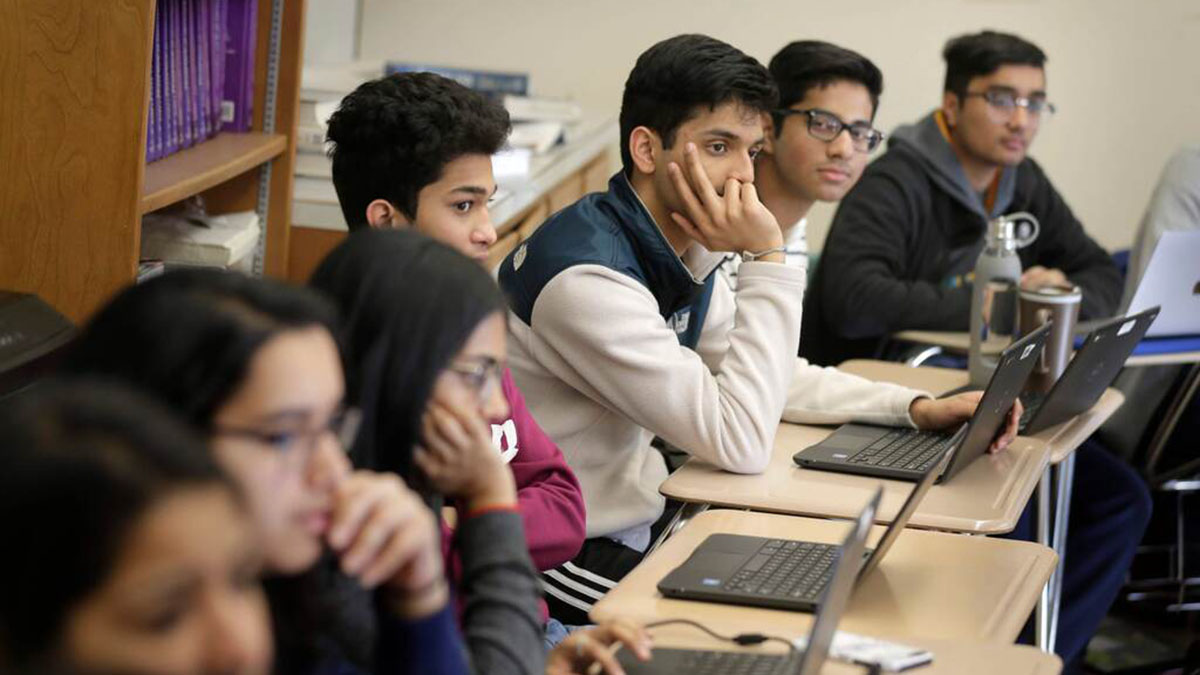On 10 March, ISRO announced its plans to launch two rockets for Chandrayaan-4, comprising five spacecraft modules, aiming to retrieve lunar samples. This project, if successful, will make India only the fourth nation in the world with this capability. The mission is slated for launch around 2028. These anticipated advancements, coupled with recent triumphs such as Chandrayaan-3 and Aditya L-1 (India’s pioneering space mission to study the sun), accentuate the nation’s strong commitment to Science, Technology, Engineering and Mathematics (STEM) education.
It’s widely understood that successful space exploration initiatives require a highly skilled workforce in crucial fields like aerospace engineering, robotics, and astrophysics. This expertise can only be cultivated through sustained efforts to nurture successive generations capable of pursuing careers in STEM. That is also one of the key reasons why STEM subjects are receiving significant importance in our education system.
The STEM ecosystem currently needs to incorporate three crucial elements- Innovation, Integration, and Inclusivity. Educational institutions must actively integrate emerging technologies, promote interdisciplinary collaboration, and prioritise practical applications to equip the upcoming generation with the skills necessary to become leaders, innovators, scientists, and proficient problem-solvers. This approach not only facilitates the acquisition of knowledge but also cultivates a holistic understanding of real-world challenges, thereby nurturing a diverse pool of talents poised to shape the future.
Meanwhile, a significant factor that will catalyse transformative changes in STEM education is the integration of technology. This incorporation will continue to enrich the learning process via heightened interactivity, leading to improved student engagement and facilitating dynamic exploration and comprehension of STEM subjects.
Impact Shorts
More ShortsFuture of learning
Educators worldwide believe that the days of a uniform approach in education are behind us, and personalised learning experiences tailored to each student’s strengths, weaknesses, and learning styles will form the cornerstone of future pedagogy. In this customized approach to learning, technology will play a significant role.
For example, the efficient utilisation of an Artificial Intelligence (AI) platform that analyses students’ academic profiles can yield detailed insights into their performance across subjects. It can discern strengths and weaknesses, such as proficiency in Math but weakness in Chemistry, along with subtle nuances.
In manual assessment, data collection, and scrutiny for each student can be time-consuming, while, with predefined parameters, technology can streamline this whole process. Once the evaluation is complete, the platform can then be used to tailor curriculum preferences for individual students. It can pinpoint areas needing improvement and offer supportive measures to enhance learning outcomes.
Another significant technology making strides in STEM education is Virtual Reality (VR). Departing from static images in textbooks, we can anticipate more educational sessions enhanced by VR, allowing students to embark on virtual tours of specific topics. For example, while studying the solar system, imagine being able to witness its movements and understand concepts like rotation and revolution through VR-enabled glasses. VR also facilitates the replication of real-world scientific scenarios, crucial for sparking students’ interest in STEM.
Looking ahead, we can anticipate the emergence of interactive textbooks enhanced by AR, as well as the integration of technology for student assessments. Further, gamification tools can enhance interactivity and competitiveness in learning, where students earn points and vie for top spots on leaderboards, making the learning experience more enjoyable.
By incorporating emerging technologies, fostering interdisciplinary collaboration and emphasizing practical application, India’s educational institutions are all set to prepare the next generation of leaders, innovators, and problem solvers. The journey ahead promises to be transformative, bridging the gap between education and the demands of the modern world, and empowering India’s youth to blaze new trails in STEM fields.
The author is the founder and managing director of Tree House Education & Accessories Ltd. Views expressed in the above piece are personal and solely that of the author. They do not necessarily reflect Firstpost’s views.


)

)
)
)
)
)
)
)
)



